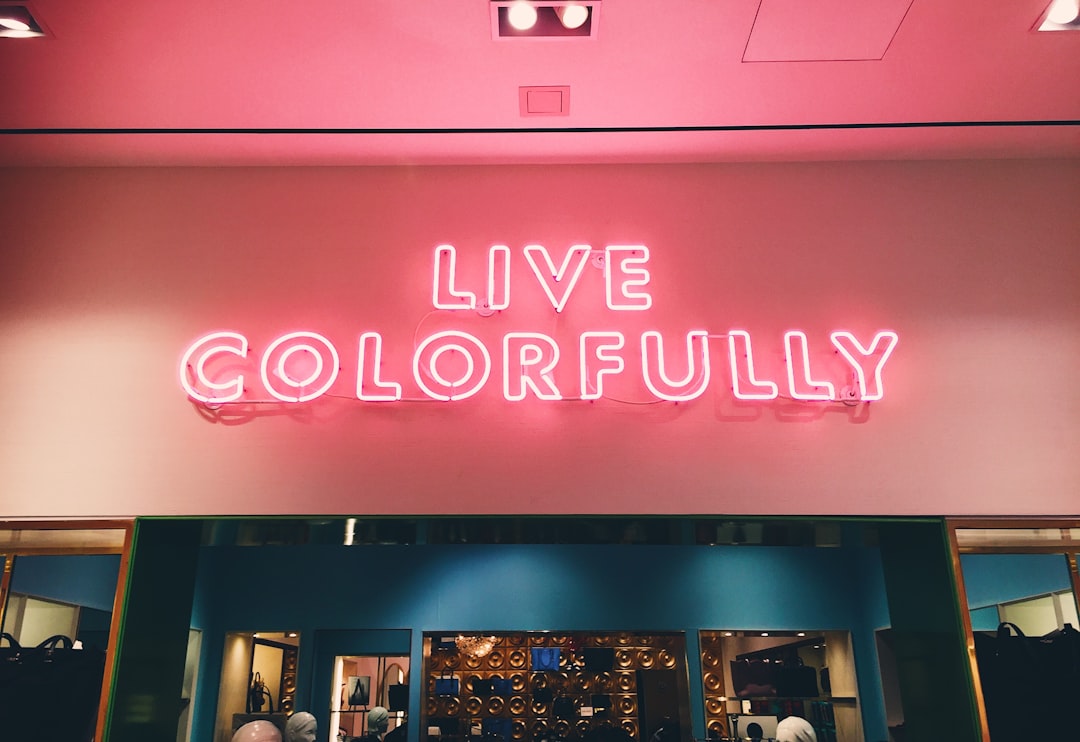The Power of Color: Influencing Emotions and Behavior
Discover the impact of colors on mood and perception, and how color psychology can influence emotions and behaviors, in this comprehensive article exploring the interdisciplinary field of color psychology and its practical applications in design, marketing, and therapy.
Introduction to Color Psychology
Color psychology delves into the impact of colors on human emotions, behaviors, and perceptions, exploring the profound influence colors have on various aspects of life. This interdisciplinary field merges elements of psychology, design, marketing, and therapy to comprehensively understand how colors affect individuals. For instance, warm colors like red and yellow are known to evoke feelings of energy, warmth, and optimism, while cool tones such as blue and green are associated with calmness, tranquility, and relaxation. These color associations are not only influenced by cultural factors but also by personal experiences and contexts, highlighting the complexity of color perception.
Colors play a crucial role in evoking emotional responses and shaping consumer behavior in marketing and branding strategies. For example, brands strategically use colors like red to evoke excitement and passion in consumers, while blue is commonly employed in corporate branding for its associations with trust, reliability, and professionalism. Understanding the psychological implications of color choices in branding can enhance brand recognition and foster strong emotional connections with consumers. Color consistency across various branding elements further strengthens the brand identity and influences consumer perceptions. To delve deeper into the impact of color psychology on emotions and behaviors, it is essential to comprehend how cultural variations in color symbolism can significantly influence individual preferences and interpretations.
The Science Behind Color and Emotions
When delving into the science of color and emotions, it becomes evident that different colors can significantly impact our mood and feelings. For instance, warm colors like red and yellow are known to evoke a sense of energy, warmth, and optimism in individuals, making them feel more vibrant and lively. On the other hand, cool colors such as blue and green are often associated with feelings of calmness, tranquility, and relaxation, creating a soothing and peaceful atmosphere.
Moreover, the way we perceive colors is not solely determined by cultural influences but is also shaped by personal experiences and the context in which the colors are encountered. For example, someone who associates the color blue with the ocean may feel a sense of serenity when surrounded by that color, while another person who has had negative experiences related to blue may feel differently. This personalized interpretation of colors adds layers of complexity to how we emotionally respond to different color stimuli, highlighting the intricate relationship between color and human emotions.
Understanding the intricate interplay between colors and emotions can offer valuable insights into how we can harness the power of colors to positively impact our mood and well-being. By being mindful of the emotional cues that different colors convey, we can make conscious color choices in our environment to create spaces that promote feelings of joy, relaxation, and positivity.
Cultural Variations in Color Symbolism
Color symbolism is a fascinating aspect of cultural diversity, showcasing the varied meanings attributed to colors across different societies. An interesting example is the color white, which symbolizes purity and innocence in Western cultures; however, in certain Eastern cultures, it is associated with mourning and death, illustrating the stark contrasts in color interpretations. Another intriguing color is black, often linked to elegance and sophistication in the fashion world but carrying negative or evil symbolism in other cultural contexts. These diverse interpretations emphasize the need for sensitivity to cultural nuances in communication and design.
Moreover, the significance of color symbolism extends beyond mere aesthetics, delving into deep-rooted cultural beliefs and traditions. By exploring how colors are perceived and valued in various societies, we gain valuable insights into the intricate tapestry of human emotions and perceptions. This cultural kaleidoscope of color meanings highlights the richness and complexity of global perspectives, underscoring the importance of considering cultural diversity in all aspects of design and communication. Understanding and respecting these cultural variations in color symbolism not only enriches our awareness but also enhances our ability to engage meaningfully with diverse audiences.
Visit Bonbop to discover a vibrant array of clothing and accessories that celebrate the beauty and diversity of color symbolism, inviting you to embrace the rich tapestry of cultural interpretations through fashion.
Color Psychology in Marketing and Branding Strategies
The significance of colors in marketing and branding strategies goes beyond mere aesthetics; it deeply impacts consumer perceptions and behaviors. Companies strategically leverage colors to evoke particular emotions and associations in their target audience. For instance, renowned brands such as Coca-Cola strategically incorporate the color red in their branding to ignite feelings of excitement and passion among consumers, thereby reinforcing their brand identity. Similarly, blue, a color synonymous with trust, dependability, and professionalism, is a popular choice in corporate branding due to its ability to instill a sense of reliability in consumers.
Moreover, the consistency of color usage across various branding elements plays a pivotal role in reinforcing brand recognition and fostering strong emotional connections with consumers. When consumers encounter consistent color schemes and palettes associated with a brand, it enhances brand recall and creates a cohesive brand image that resonates with their emotions and preferences. This emotional bond forged through color consistency can significantly influence consumer loyalty and purchase decisions, ultimately shaping the success of marketing and branding campaigns.
By delving into the psychology of colors and understanding the emotional responses they evoke, businesses can create impactful branding strategies that not only attract attention but also establish lasting connections with their target audience. To explore firsthand how colors can shape consumer perceptions and emotions, visit the vibrant collection of clothing and accessories at Bonbop, where each color is thoughtfully chosen to elevate your mood and style.
Color Therapy and its Influence on Well-being
Color therapy, also referred to as chromotherapy, is a fascinating approach based on the belief that colors possess the ability to profoundly influence both physical and emotional health. For instance, exposure to warm colors like red and yellow is believed to stimulate energy centers in the body, promoting vitality and optimism, while cool colors such as blue and green are thought to induce feelings of calmness and relaxation. Through the strategic application of various colors, practitioners aim to restore balance and harmony within the body, fostering overall well-being and healing.
Moreover, color therapy encompasses a spectrum of practices that harness the power of colors for therapeutic purposes. These practices extend beyond conventional approaches and may include using colored lights, visualization techniques, and color-infused treatments to address a myriad of health and wellness concerns. By immersing individuals in specific hues tailored to their needs, color therapy intends to tap into the profound relationship between colors and emotions, offering a holistic approach to enhancing one's quality of life.
Explore the transformative potential of color therapy in nurturing your physical and emotional well-being. Discover how chromotherapy can harmonize your energy centers and promote healing by visiting Bonbop, where a vibrant array of clothing and accessories awaits to elevate your mood and style.
Practical Applications of Color Psychology in Design and User Behavior
When it comes to design and user behavior, the significance of color choices cannot be overstated. Colors play a crucial role in influencing how users engage with websites, perceive information, and navigate interfaces. For instance, vibrant and contrasting color schemes are commonly employed to highlight key elements on a webpage, guiding users' attention and enhancing readability. By strategically selecting colors based on their psychological impact, designers can create visually engaging platforms that captivate users and improve their overall experience.
Moreover, the use of color psychology in design extends beyond aesthetics; it directly influences user behavior and decision-making processes. For example, warm colors like red and orange are often associated with urgency and can prompt users to take immediate action, such as clicking on a call-to-action button or making a purchase. Conversely, cool colors like blue and green are linked to feelings of calmness and trust, fostering a sense of security and reliability in users. By leveraging these color associations, designers can subtly guide user interactions and shape desired behaviors on websites and digital platforms.
In conclusion, mastering the art of color psychology in design is not just about creating visually appealing layouts; it's about understanding how colors influence user emotions, behaviors, and perceptions. By incorporating strategic color choices informed by psychological principles, designers can craft immersive digital experiences that resonate with users on a deeper level, ultimately driving engagement, enhancing usability, and fostering lasting connections with their target audience. Explore the power of color psychology in design by visiting Bonbop for a transformative and engaging design experience.
Conclusion on the Impact of Colors on Mood and Perception
Color psychology is a fascinating field that highlights the profound influence colors have on human emotions and behaviors. The ability of colors to evoke specific feelings and shape individual preferences underscores the importance of understanding color psychology in various aspects of life, from design to marketing. For example, warm colors like red and yellow are known to spark feelings of energy and optimism, while cool colors like blue and green often evoke a sense of tranquility and calmness.
Moreover, the impact of colors on mood and perception extends beyond personal experiences to encompass cultural variations and symbolism. Different cultures assign diverse meanings to colors, influencing how they are perceived and interpreted. For instance, while white symbolizes purity in Western cultures, it may represent mourning in some Eastern cultures, showcasing the intricate nuances of color symbolism worldwide. Understanding these cultural differences is vital for effective cross-cultural communication and design strategies, emphasizing the significance of color psychology in a global context.
In essence, colors have the power to transform our emotional state, guide our decision-making processes, and create lasting impressions. By recognizing the role of color psychology in our lives, we can harness the potential of colors to enhance our well-being and create meaningful connections with the world around us. Take a step towards exploring the impact of colors on your mood and perception by immersing yourself in the vibrant and stylish offerings of Bonbop, a fashion brand that celebrates the art of color in every design. Embrace the colorful world of Bonbop and experience firsthand how color psychology can elevate your mood and style by visiting their website at Bonbop.









